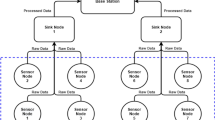Abstract
The knee joint is the largest and most complex flexion and extension joint of the human body. It supports most of the weight of the human body during the whole body during standing or exercise. Because the knee joint has the characteristics of complex structure and large load, it is also vulnerable to damage. An effective diagnosis in the early stage of injury or lesion of the knee joint is of great help to the later treatment. At present, the commonly used knee joint examination methods have the problems of large trauma and high cost. Therefore, this paper uses machine learning technology to study the classification algorithm of knee joint vibration signal. The research results of this paper were verified by selecting the subjects to form a healthy group and a disease injury group. The experimental results show that the proposed signal denoising algorithm is superior to the traditional denoising algorithm. After analyzing several classification algorithms, the multi-classifier fusion algorithm has excellent performance in signal classification. The experimental results show that the research results can be applied to the classification of knee joint vibration signals, and then applied to the clinical diagnosis of knee joint diseases.


Similar content being viewed by others
References
Wellsandt E, Gardinier ES, Manal K et al (2016) Decreased knee joint loading associated with early knee osteoarthritis after anterior cruciate ligament injury. Am J Sports Med 44(1):143–151
Hart HF, Culvenor AG, Collins NJ et al (2016) Knee kinematics and joint moments during gait following anterior cruciate ligament reconstruction: a systematic review and meta-analysis. Br J Sports Med 50(10):597–612
Gupta PK, Chullikana A, Rengasamy M et al (2016) Efficacy and safety of adult human bone marrow-derived, cultured, pooled, allogeneic mesenchymal stromal cells (Stempeucel®): preclinical and clinical trial in osteoarthritis of the knee joint. Arthritis Res Thera 18(1):301
Wang X, Blizzard L, Halliday A et al (2016) Association between MRI-detected knee joint regional effusion-synovitis and structural changes in older adults: a cohort study. Ann Rheum Dis 75(3):519–525
Wei H, Dibb R, Decker K et al (2017) Investigating magnetic susceptibility of human knee joint at 7 Tesla. Magn Reson Med 78(5):1933–1943
Chang AH, Chmiel JS, Almagor O et al (2017) Association of baseline knee sagittal dynamic joint stiffness during gait and 2-year patellofemoral cartilage damage worsening in knee osteoarthritis. Osteoarthr Cartil 25(2):242–248
Van Rossom S, Smith CR, Thelen DG et al (2018) Knee joint loading in healthy adults during functional exercises: implications for rehabilitation guidelines. J Orthop Sports Phys ther 48(3):162–173
Cheung RTH, Ho KKW, Au IPH et al (2018) Immediate and short-term effects of gait retraining on the knee joint moments and symptoms in patients with early tibiofemoral joint osteoarthritis: a randomized controlled trial. Osteoarthr Cartil 26(11):1479–1486
Haibin Mo, Zhiyu Pan, Yuankai Chen (2018) The diagnostic value of MRI examination for knee joint injury. Guangxi Med J 40(12):50–51
Xia Li (2018) Ultrasound diagnosis of knee joint disease in children. Chinese J Drugs Clin 18(06):41–42
Zhiwu Chen, Shijian Zhao, Wuying Qiu (2019) Application value of MSCT reconstruction technique in the diagnosis of knee fracture. Hainan Med J 30(03):90–92
Patel J, Shah S, Thakkar P et al (2015) Predicting stock and stock price index movement using trend deterministic data preparation and machine learning techniques. Expert Syst Appl 42(1):259–268
Obermeyer Z, Emanuel EJ (2016) Predicting the future-big data, machine learning, and clinical medicine. New Engl J Med 375(13):1216
Said AM, Abd-Elrahman E, Afifi H (2017) A comparative study on machine learning algorithms for green context-aware intelligent transportation systems. In: 2017 International conference on electrical and computing technologies and applications (ICECTA). IEEE, pp. 1–5
Wu D, Jennings C, Terpenny J et al (2017) A comparative study on machine learning algorithms for smart manufacturing: tool wear prediction using random forests. J Manuf Sci Eng 139(7):071018
Ciolacu M, Tehrani AF, Beer R, et al. (2017) Education 4.0-Fostering student’s performance with machine learning methods. In: 2017 IEEE 23rd international symposium for design and technology in electronic packaging (SIITME). IEEE, pp. 438–443
Gu GX, Chen CT, Richmond DJ et al (2018) Bioinspired hierarchical composite design using machine learning: simulation, additive manufacturing, and experiment. Mater Horiz 5(5):939–945
Acknowledgements
This work was supported by Shandong Key Research and Development Project (No.2019GHY112068;No.2019GGX101011), SDUST Research Fund (No. 2018TDJH101), Open Fund Project of Shandong Province Key Laboratory of Mine Mechanical Engineering (2019KLMM202), and Shandong Provincial College Science and Technology Planning project (J18KA009).
Author information
Authors and Affiliations
Corresponding author
Ethics declarations
Conflict of interest
These no potential competing interests in our paper. And all authors have seen the manuscript and approved to submit to your journal. We confirm that the content of the manuscript has not been published or submitted for publication elsewhere.
Additional information
Publisher's Note
Springer Nature remains neutral with regard to jurisdictional claims in published maps and institutional affiliations.
Rights and permissions
About this article
Cite this article
Zheng, Y., Wang, Y., Liu, J. et al. Knee joint vibration signal classification algorithm based on machine learning. Neural Comput & Applic 33, 985–995 (2021). https://doi.org/10.1007/s00521-020-05370-z
Received:
Accepted:
Published:
Issue Date:
DOI: https://doi.org/10.1007/s00521-020-05370-z




